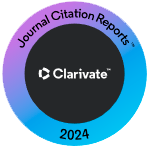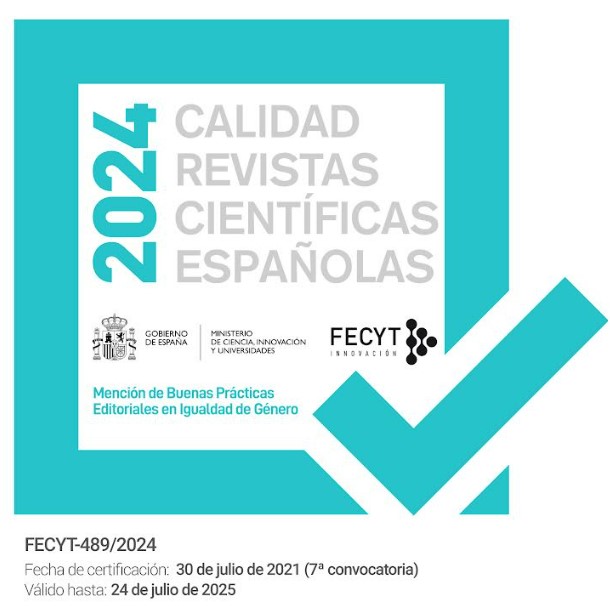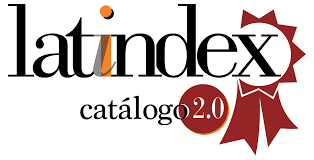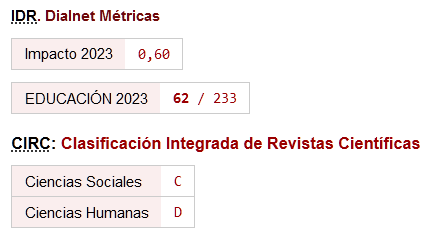Online Distance Learning Amidst COVID-19
DOI:
https://doi.org/10.46661/ijeri.5271Keywords:
Acceptance, Implementation, Online Distance Learning, Pandemic, Covid-19Abstract
The purpose of this paper is to determine the factor that makes online distance learning successful during the pandemic COVID-19. This paper focused on uncovering factors to make online distance learning possible during the pandemic. The research is phenomenological in nature and descriptive-survey method was used to identify the technology skills, attitude towards the characteristics of a successful online teacher/student, and level of readiness for the administrators, together with the experienced benefits that were experienced in online distance learning. Correlational analysis was employed to determine the relationship between the variables. Findings show that teachers and students have basic technology skills in online distance learning through the use of Facebook and Messenger; they can generate knowledge even without physical interaction and at their most convenient time. Gadgets or devices useful for online distance learning and unreliable internet access and/or technology struggle in joining digital learning to do school tasks are the prevailing challenges of the teachers and students. Attitude towards online distance learning is strongly correlated to the experienced benefits of online distance learning by the teachers and students. The readiness of the institution in adapting online learning is strongly correlated to the experienced benefits of the administrators. The study was Phenomenological in nature. It was conducted during the pandemic COVID-19. The study brought surface the lived experiences of the respondents in online distance learning during COVID-19. This paper will be useful for school administrators and teachers as basis for policy and program formulation for online distance learning implementation to be crafted to suit in the “new normal” environment.
Downloads
References
Andersson, A., & Grönlund, Å. (2009). A Conceptual Framework for E-Learning in Developing Countries: A Critical Review of Research Challenges. The Electronic Journal of Information Systems in Developing Countries, 38(1), 1-16. Retrieved from: https://doi.org/10.1002/j.1681-4835.2009.tb00271.x
Bagayas, S. (2020). Students of top 4 PH schools urge CHED to suspend online classes. Rappler. Retrieved from: https://www.rappler.com/nation/students-top-schools-philippines-call-ched-suspend-online-classes-coronavirus-outbreak
Baht, S. (2020). Top 5 Reasons Why Online Learning Is Better Than Face-To-Face Learning. eLearning Industry. Retrieved from: https://elearningindustry.com/reasons-why-online-learning-face-to-face-learning
Bovermann, K., Weidlich, J., & Bastiaens, T. (2018). Online learning readiness and attitudes towards gaming in gamified online learning – a mixed methods case study. International Journal of Educational Technology in Higher Education, 15(1). https://doi.org/10.1186/s41239-018-0107-0
Doculan, J. (2014), E-learning readiness of the Ifugao State University. International Journal of Engineering Research & Technology (IJERT). Retrieved from: https://www.ijert.org/research/e-learning-readiness-of-the-ifugao-state-university-IJERTV3IS21387.pdf
Educause. (2020), Online learning. Retrieved from: https://library.educause.edu/topics/teaching-and-learning/online-learning
Fell, A. (2020). Generation Z defined; The 5 characteristics of today’s students. mccrindle. Retrieved from: https://mccrindle.com.au/insights/blog/generation-z-defined-5-characteristics-todays-students/
Gādé L., & Manjari, A. (2018). e-Readiness of State Open Universities: A Study of BRAOU and UOU. Retrieved from: https://www.researchgate.net/publication/326848033_e-Readiness_of_State_Open_Universities_A_Study_of_BRAOU_and_UOU
Guillén-Gámez, F. D., & Mayorga-Fernández, M. J. (2020). Identification of Variables that Predict Teachers’ Attitudes toward ICT in Higher Education for Teaching and Research: A Study with Regression. Sustainability, 12(4), 1312. https://doi.org/10.3390/su12041312
ISC RESEARCH. (2020). Coronavirus COVID-19 update. Retrieved from: https://www.iscresearch.com/cornavirus-covid-19-update
Kao, C. P., & Tsai, C.C. (2009). Teachers’ attitudes toward web-based professional development, with relation to Internet self-efficacy and beliefs about web-based learning. Computers & Education, 53(1), 66–73. https://doi.org/10.1016/j.compedu.2008.12.019
Kemp, S. (2019). Digital 2019: Global Internet Use Accelerates - We Are Social. We Are Social. Retrieved from: https://wearesocial.com/blog/2019/01/digital-2019-global-internet-use-accelerates
Kokemuller, N. (2016). The Advantages & Disadvantages of Online Classes Used in Colleges. Education. Retrieved from: https://education.seattlepi.com/advantages-disadvantages-online-classes-used-colleges-1020.html
Mercado, C. (2008). Readiness Assessment Tool for An eLearning Environment Implementation [Conference Session]. Fifth International Conference on eLearning for Knowledge-Based Society, Bangkok, Thailand. Retrieved from: https://www.academia.edu/3294490/Readiness_Assessment_Tool_for_An_eLearning_Environment_Implementation
Moreno, J. & Gortazar, L. (2020). Schools’ readiness for digital learning in the eyes of principals. An analysis from PISA 2018 and its implications for the COVID19 (Coronavirus) crisis response. World Bank Blogs. Retrieved from https://blogs.worldbank.org/education/schools-readiness-digital-learning-eyes-principals-analysis-pisa-2018-and-its
OEDb. (2020). Essential computer and technology skills of online learners. Retrieved from: https://oedb.org/advice/essential-computer-and-technology-skills-of-online-learners/
Omar, N. D., Hassan, H., & Atan, H. (2012). Student Engagement in Online Learning: Learners Attitude Toward E-Mentoring. Procedia - Social and Behavioral Sciences, 67, 464–475. https://doi.org/10.1016/j.sbspro.2012.11.351
Pascual, F. D. (2019). Phl wi-fi: Slow, but deep penetrating. Philstar.com. Retrieved from: https://www.philstar.com/opinion/2019/08/04/1940360/phl-wi-fi-slow-deep-penetrating
Perera, V., Mead, C., Buxner, S., Lopatto, D., Horodyskyj, L., Semken, S., & Anbar, A. D. (2017). Students in Fully Online Programs Report More Positive Attitudes toward Science Than Students in Traditional, In-Person Programs. CBE—Life Sciences Education, 16(4), ar60. https://doi.org/10.1187/cbe.16-11-0316
Saekow, A., & Samson, D. (2011). E-learning Readiness of Thailand’s Universities Comparing to the USA’s Cases. International Journal of Electrical Engineering Education (IJEEE). 1(2), 126-131. DOI:10.7763/IJEEEE.2011.V1.20
Sapungan, G. & Sapungan, R. (2014). Parental Involvement in Child's Education: Importance, Barriers and Benefits. Asian Journal of Management Sciences & Education. 3(2), 42-48. Retrieved from: http://www.ajmse.leena-luna.co.jp/AJMSEPDFs/Vol.3(2)/AJMSE2014(3.2-05).pdf
Santos, J.M. (2017). 21st century learning skills: A challenge in every classroom. International Journal of Emerging Multidisciplinary Research, 1(1), 31-35. DOI: 10.22662/IJEMR.2017.1.1.031.
Shaw, C. (2017). Using facebook as an educational resource in the classroom. International Studies Association and Oxford University Press. DOI: 10.1093/acrefore/9780190846626.013.114
Stern, B. (2016). A comparison of online and face-to-face instruction in an undergraduate foundations of American education course. Contemporary Issues in Technology And Teacher Education. Retrieved from: https://citejournal.org/volume-4/issue-2-04/general/a-comparison-of-online-and-face-to-face-instruction-in-an-undergraduate-foundations-of-american-education-course/
Stone, C. (2017). Opportunity through online learning: improving student access, participation and success in higher education. National Centre for Student Equity in Higher Education. Retrieved from: https://apo.org.au/node/94591
Study International Stuff. (2019). Lack of access to technology at home impedes student learning – study. SI News. Retrieved from: https://www.studyinternational.com/news/lack-of-access-to-technology-at-home-impedes-student-learning-study/
Trines, S. (2018). Educating the Masses: The Rise of Online Education in Sub-Saharan Africa and South Asia. WENR. Retrieved from: https://wenr.wes.org/2018/08/educating-the-masses-the-rise-of-online-education
Trucano, M. (2014). Education & technology in an age of pandemics (revisited). World Bank Blogs. Retrieved from: https://blogs.worldbank.org/edutech/education-technology-age-pandemics-revisited
U.S. Department of Education. (2020). Use of technology in teaching and learning. Retrieved from: https://www.ed.gov/oii-news/use-technology-teaching-and-learning
UNESCO. (2020). COVID-19 Educational disruption and response. Retrieved from: https://en.unesco.org/covid19/educationresponse
Downloads
Published
How to Cite
Issue
Section
License
Copyright (c) 2020 Joseline Santos, Leonora F De Jesus, Ruth R. Sealmoy , Reggie Rey C. Fajardo

This work is licensed under a Creative Commons Attribution-NonCommercial-NoDerivatives 4.0 International License.












